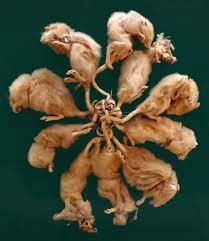Ratking

In the realm of natural curiosities, few phenomena capture the imagination quite like the enigmatic “rat king.” Combining elements of folklore, biology, and historical intrigue, these tangled clusters of rodents have fascinated and perplexed humans for centuries. Despite their occasional appearance in the annals of history and folklore, rat kings remain shrouded in mystery, prompting questions about their origins, prevalence, and significance in the natural world. Let us embark on a journey to unravel the secrets of the rat king and shed light on this captivating phenomenon.
The Rat King:
Myth and Reality To understand the rat king, one must first distinguish between fact and fiction. In folklore and myth, rat kings have been depicted as ominous omens or symbols of pestilence, often associated with dark superstitions. Tales of these tangled rodent conglomerates have circulated throughout Europe for centuries, perpetuating fears and legends about their supposed supernatural powers.
However, in the realm of science, the phenomenon of rat kings is approached with a more pragmatic lens. A rat king occurs when a group of rats becomes entangled by their tails, creating a complex knot that binds them together. This entanglement can occur naturally, typically in environments where rats congregate closely, such as barns, sewers, or grain storage facilities. The exact mechanism by which rat kings form remains a subject of scientific inquiry, with theories ranging from accidental entanglement to deliberate nesting behavior.
Rarity and Occurrence
The Rarity and Occurrence of Rat Kings Despite their prevalence in folklore and historical accounts, confirmed sightings of rat kings are exceedingly rare. The scarcity of documented cases has led some to question the authenticity of these phenomena, fueling skepticism and skepticism in scientific circles. However, researchers point out that the conditions conducive to rat king formation are relatively uncommon, making encounters with these tangled rodents a rare occurrence indeed.
Furthermore, the fleeting nature of rat kings presents challenges for scientific study, as specimens are often discovered long after the rats have perished, leaving behind only skeletal remains. This lack of fresh specimens makes it difficult to study the phenomenon in real-time, leaving many questions unanswered about the behavior and biology of rat kings.
Biology and Ecology
The Significance of Rat Kings in Biology and Ecology Despite their rarity, rat kings offer valuable insights into the social dynamics and behavior of rats. The formation of these tangled clusters highlights the close-knit nature of rat communities and their propensity for collective nesting. Understanding how and why rat kings form can provide valuable information about rat behavior, social structure, and environmental factors that influence their populations.
Moreover, the study of rat kings can have practical implications for pest control and public health. By gaining a better understanding of rat behavior and ecology, researchers can develop more effective strategies for managing rat populations and mitigating the spread of disease. Additionally, studying rat kings may shed light on the potential risks posed by zoonotic diseases transmitted by rodents, highlighting the importance of proactive measures to minimize human-wildlife interactions.
Conclusion:
In the tapestry of nature’s wonders, the rat king stands out as a peculiar and captivating phenomenon. Blending elements of myth, folklore, and scientific inquiry, these tangled clusters of rodents continue to intrigue and mystify observers around the world. While much remains to be learned about the origins and significance of rat kings, one thing is certain: they remind us of the complexity and interconnectedness of the natural world, inviting us to unravel their secrets and discover the hidden truths that lie within.






